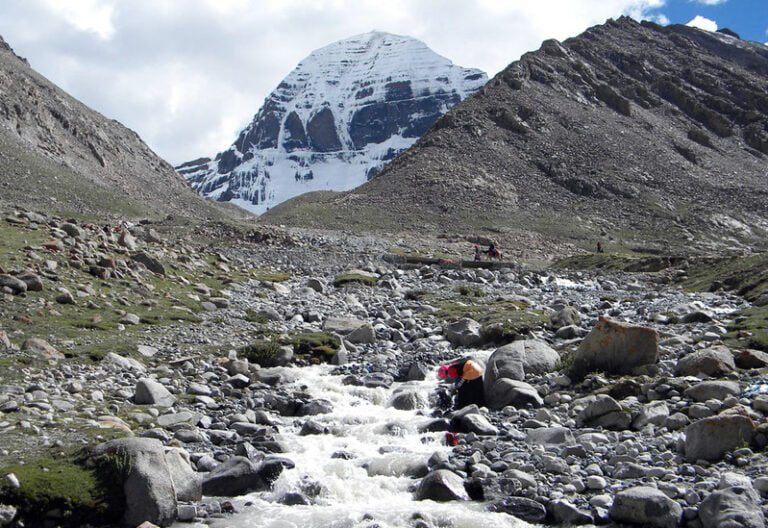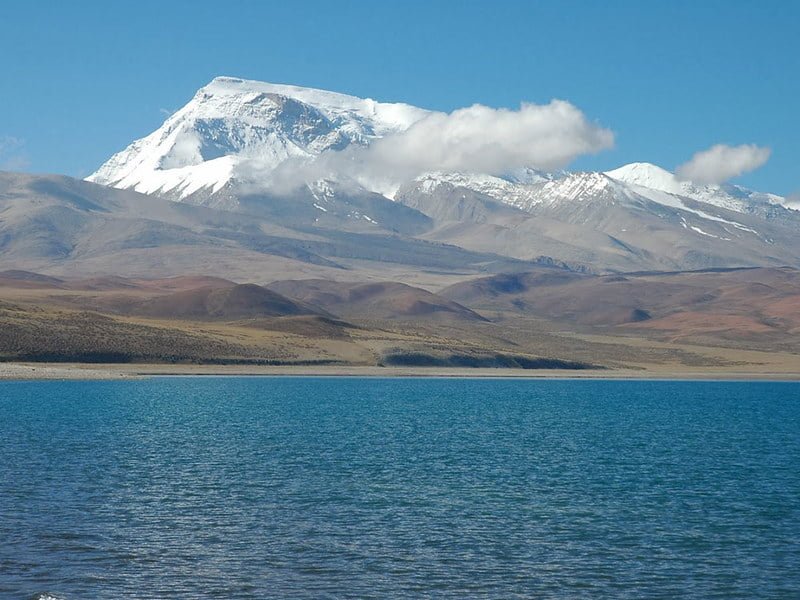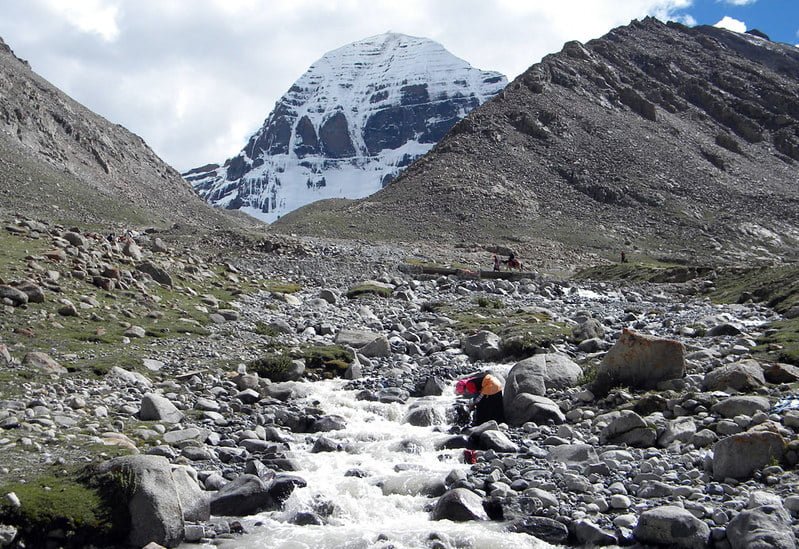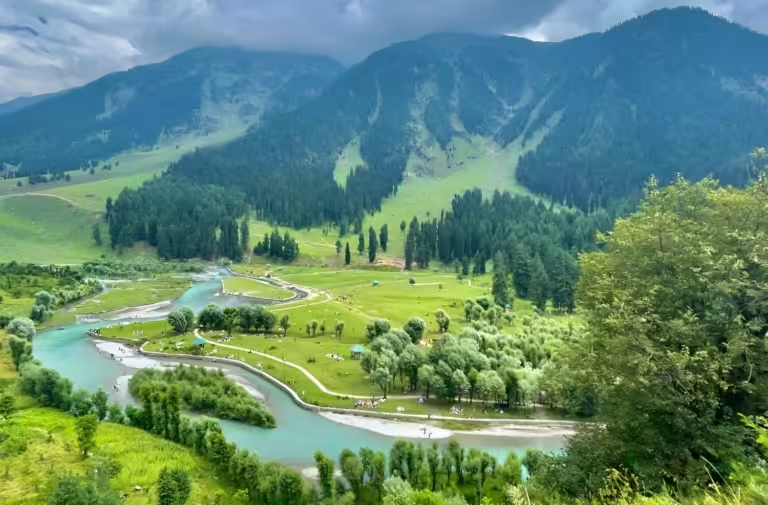Monday to Saturday - 8:00 -17:30
Kailash Mansarovar Yatra

An important pilgrimage for the followers of Hinduism, Jainism, Buddhism, and Bon religions, The Kailash Mansarovar Yatra is an annual event that devotees take up to visit the holy Mount of Kailash and the nearby lake of Mansarovar. The pilgrims come from all over the country to witness the divinity of this mythical mountain, worshiped as the abode of Lord Shiva. The yatra takes many days to complete and includes long treks on rough terrains at high altitudes.
What attracts people to this mountain is the history and significance behind it.
Significance of Kailash Mountain and Mansarovar Lake

Mount Kailash is a majestic mountain made of black rocks with a dry and rugged terrain. Located in the southwestern part of Tibet, the mountain sits at a height of 21,778 ft. and is part of the Trans-Himalayan mountain ranges. Mount Kailash is highly revered among the religions of Hinduism, Buddhism, Jainism, and Bon, the native religion of Tibet.
The Bons have since forever understood the mountain to be a sacred one, the Hindu devotees worship the mountain and believe it to be the place where Shiva resides, whereas Buddhists believe it to house the Demchok form of Buddha, and for the Jains, Mount Kailash is where the first Tirthankara (or religious leader) found freedom from the cycle of rebirth. The mountain is also believed to be the center of the universe according to Hindu Puranas and Buddhist texts whereas the Bons view the mountain as a 9-storeyed Swastika mountain, since the south side of the Kailash does resemble a huge Swastika.
Mount Kailash is also the source of 4 rivers that flow in 4 different directions, namely the Brahmaputra, Indus, Sutlej, and the Karnali, which is a tributary of the River Ganges.
Situated at the foot of Mount Kailash, lies the holy lake of Mansarovar. The lake owes its name to Lord Brahma who formed the lake in his mind which later descended on the earth. Here, Manas means mind and Sarovar means a lake, hence the name. Mansarovar is a freshwater lake with crystal clear waters and is a major pilgrimage site near Mount Kailash.
Registration for Kailash Mansarovar Yatra

The Kailash Mansarovar Yatra is organized by the Ministry of External Affairs, Government of India annually between the months of June to September. The Yatra is only accessible to Indian citizens who hold a valid Indian passport. Foreign nationals are not accommodated for the Kailash Mansarovar Yatra by the Government.
Since the yatra involves a number of treks that are to be undertaken at high altitudes with rough and unfamiliar weather conditions, the government will conduct some tests to assess if the applicants are medically and physically fit to participate. It is important to be healthy and medically fit to take up the yatra since the route that the yatra takes hardly has any medical facilities that could aid you in case of an incident.
The Kailash Mansarovar Yatra is organized with the support of the state governments of Uttarakhand, Delhi, and Sikkim, along with the efforts of the Indian Tibetan Border Police (ITBP), and can be accessed through 2 routes:
- Through the Lipulekh Pass in Uttarakhand
- Through the Nathu La Pass in Sikkim
The basic eligibility criteria for the yatri as laid down by the Ministry of External Affairs are as follows:
- Must be a citizen of India
- Possess an Indian passport which is valid for at least six months as of 01 September of the current year should be a minimum of 18 and a maximum of 70 years as of 01 January of the current year
- A Mass Index (BMI) of 25 or less should be physically fit and medically healthy.
- Foreign nationals are not eligible to apply.
The application process begins by filling out the online application on their website, after which the yatris are selected by a fair, computer-generated lot process.
If selected, the participants will be notified via email or on their mobile numbers.
After being notified, the participants will have to confirm their participation by paying a confirmation fee, which is non-refundable and will not be reimbursed at any stage of the application process, even if the participant is unable to attend the final yatra.
The participants will be required to re-confirm once again about their interest, after which they are to report to the Delhi Lung and Heart Institute in Delhi to check their fitness levels for participation.
Documents that the Yatri (Pilgrim)
- Ordinary Indian passport which is valid for at least six months as of 01 September of the current year.
- 6 copies of colored, passport-size photographs
- Indemnity Bond executed on a non-judicial stamp paper of Rs.100, or as applicable locally, and authenticated by a First Class Magistrate, or Notary Public.
- Undertaking evacuation by helicopter in case of emergency.
- Consent Form for cremation of mortal remains on the Chinese side in case of death there.
Note: These forms are available on the website for the Kailash Mansarovar Yatra itself.
After completion of the yatra, the yatris have the option of ending their trip either at Delhi or at Dharchula if they take the Lipulekh route or Gangtok for the Nathu La route.
How to Plan for the Kailash Mansarovar Yatra?
Pilgrims who have already been on the yatra organized by the Ministry more than 4 times before will not be given priority during the application process and the applicants who are legally bound to not leave the country would not be eligible to apply for the Yatra.
Pilgrims are advised to carry their required medicines for the duration of the trip, dry foods to eat during the Kora, woolen caps and scarves to protect from the harsh winds of the region, sunscreens with high SPF count, warm gloves, woolen sweaters and jackets, trekking shoes, rainproof poncho to protect you and your bag from rain and snow, sunglasses, water bottles, face masks, and basic toiletries including toilet papers.
For smooth travel, it is also advised to carry cash in the currency of the Chinese Yuan, since Mount Kailash lies across the borders.
The process to visit the holy mountain of Kailash is a long one and can be tedious but it is something you must experience. The abode of Lord Shiva, situated among the snow-capped mountains with the many stories and legends of the mountain itself truly makes it an unforgettable experience.
If you are reading this then, please send your thoughts in the comment box. Thank you!
Disclaimer: We do not take credit for some of the licensed paid images used in our blogs, whether from Google Images, Fotolia & Shutterstock.
All such images are the copyrights of their respective owners and we try to provide credit for them wherever we can. If, however, any copyright image has been used on our blog, the concerned person can either mail us directly to remove the image or provide credit to whomsoever the image may belong.



